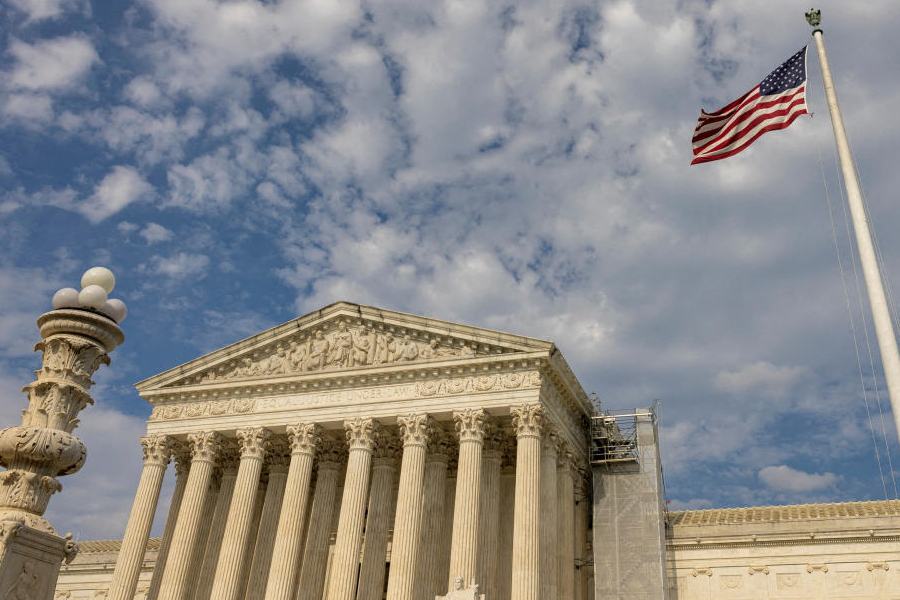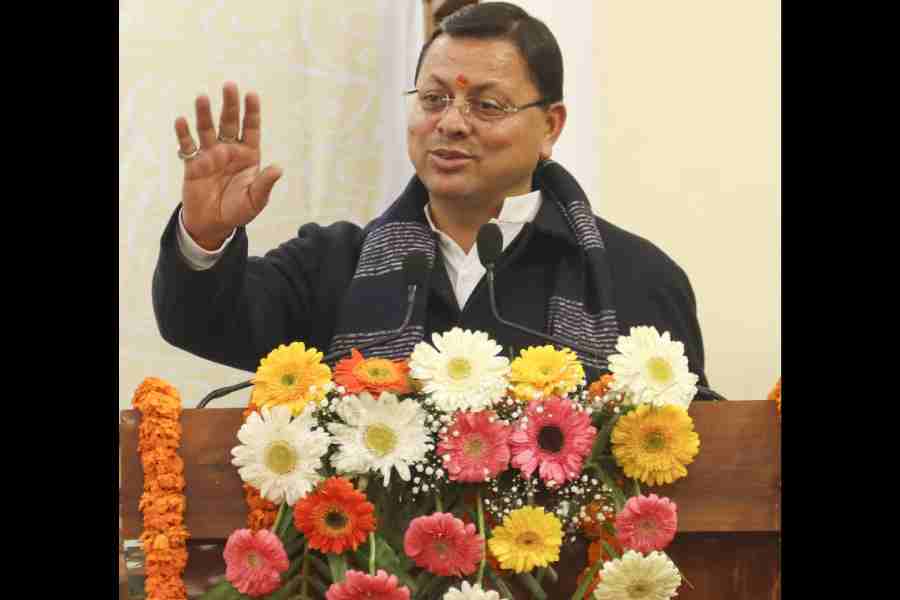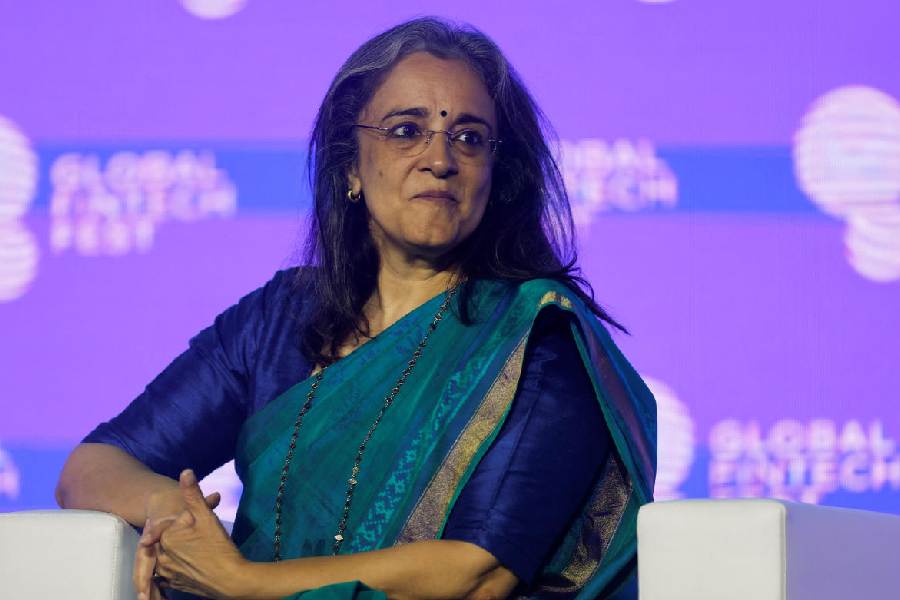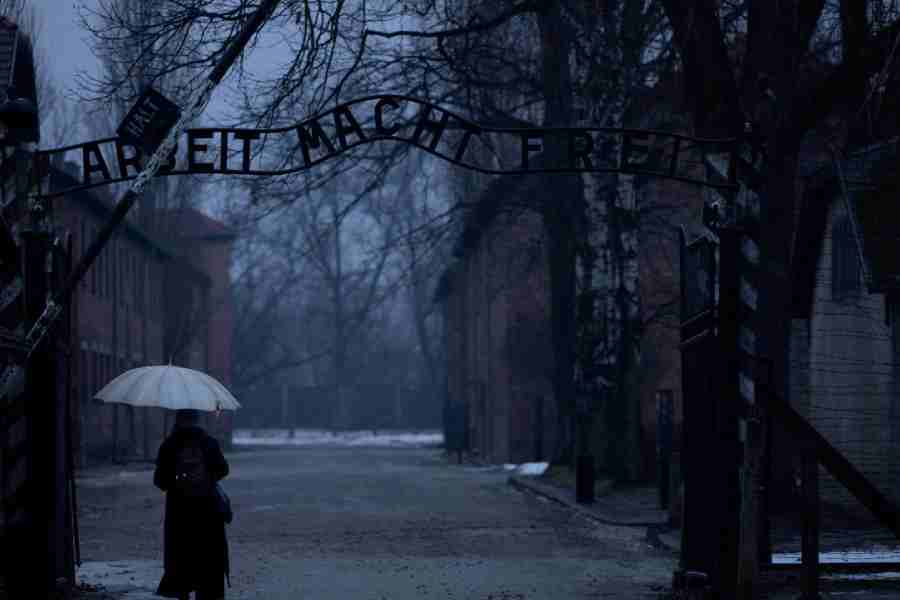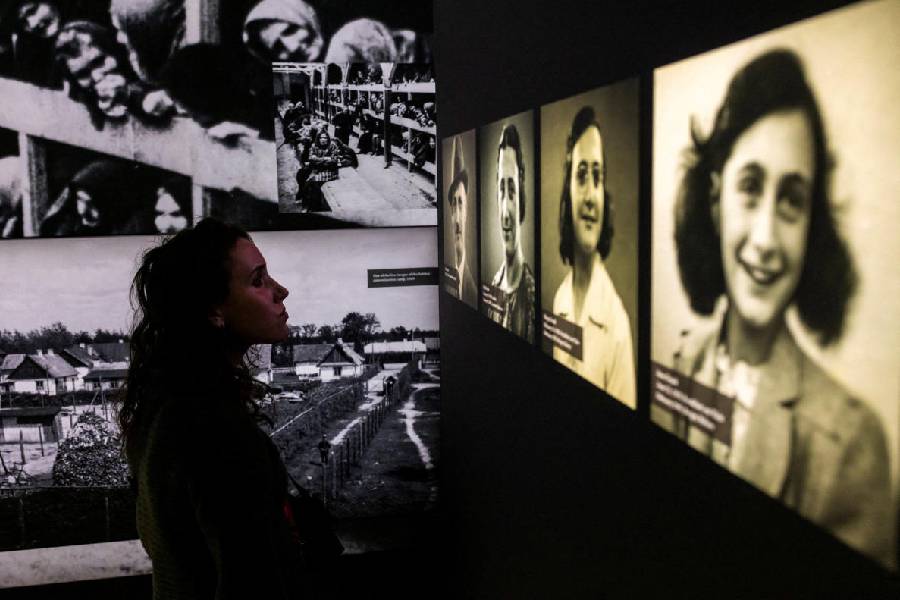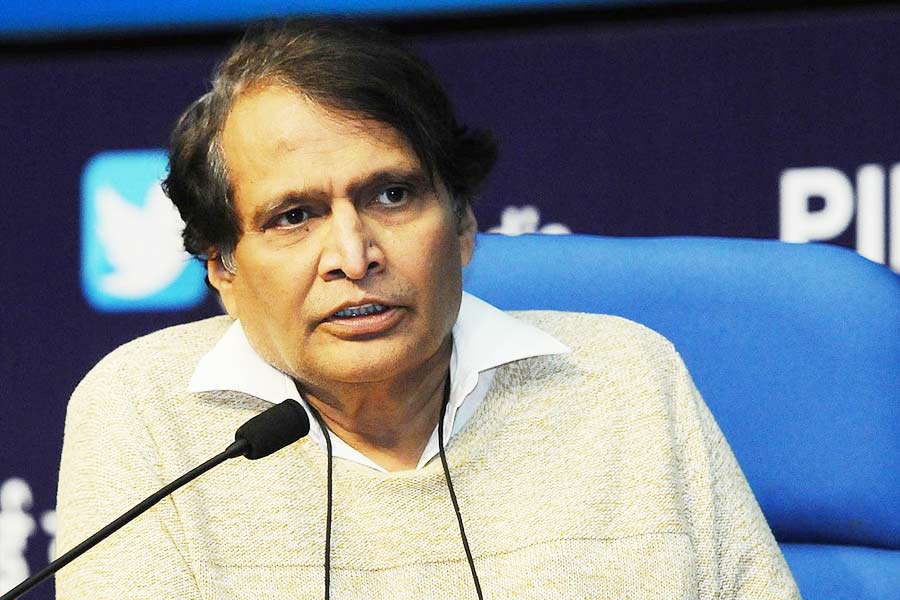There is a saying that the best camera you can have is the one you have with you. I have been using the iPhone for several years and the primary objective has been to document the world around me. Landmark buildings are vanishing and some are crumbling. Take photographs and videos of them before they disappear.
The iPhone has a range of camera options, especially when you use the Pro models. I keep falling back on taking pictures in ProRAW format which translates into photographs that can be archived. And I take videos in ProRes format so that I can work around with footage however I want. Add to this the large sensors of the camera system.
Of course, you can always use a DSLR or mirrorless camera but most of them are big and you can’t always have them near you when you need it. Here are five stories I documented in and around Calcutta with the iPhone 16 Pro Max.
Hugh Grant’s winter in Calcutta
The uncertainly of the winter of 1987 reflected in his trademark blue eyes. Still squishy around the edges, his spoon dug into a piece of rosogolla, sitting across Soumitra Chatterjee in Dhanyakuria, some 90 minutes from Calcutta.
He had slipped into the role of Allan in Nicolas Klotz’s film The Bengali Night or La Nuit Bengali, based on Mircea Eliade’s 1933 Romanian novel. A ‘dhob-dhobe forsha’ (white as snow) Allan visits Narendra Sen’s (played by Chatterjee) house, which in real life is the Gaine Mansion. It was built over several years by Gobinda Chandra Gaine and then his son, Mahendranath Gaine.
Love, or something like it, gets to him when he meets Gayatri (Supriya Pathak), the daughter of Narendra and Indira (Shabana Azmi). Still basking in the glory of his role in Maurice, which by then had picked up an Oscar nomination, Hugh was already at his best — playing versions of himself.
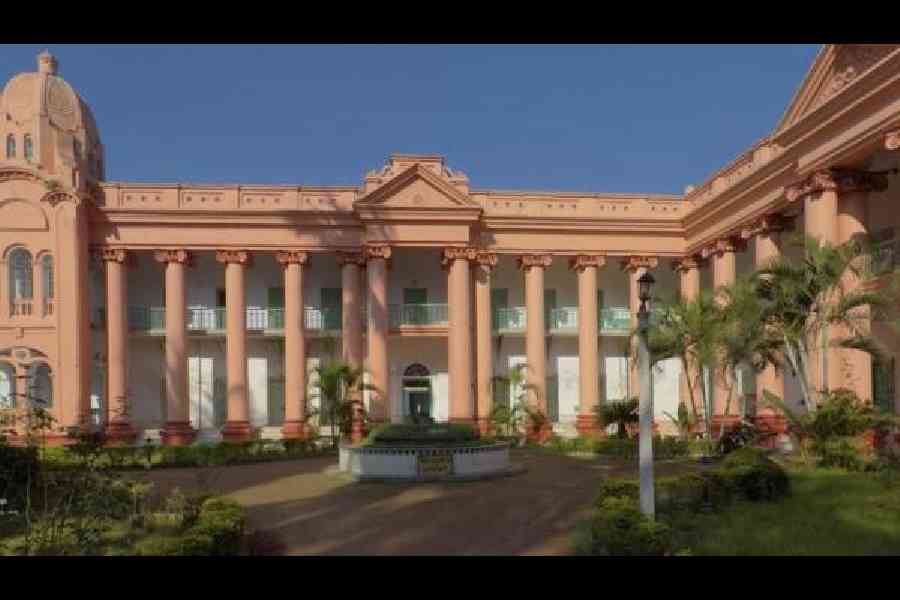
Gaine Mansion
The director was confident as not since Jean Renoir shot his The River in India, had another Frenchman tried to make a feature film here. Offering him a pick-me-up was the chance of meeting Satyajit Ray. The film was supported by Ray, who visited the set and some of his technicians were employed during the shoot.
At the same time, controversy was brewing as the late Maitreyi Debi, the celebrated poet and novelist, was cut up about the making of the film.
Set in Calcutta of the Thirties, it was apparently the story of the author Mircea Eliad’s love affair with her. Later, she wrote about what transpired in Na Hanyate but the two versions differed.
The film is forgotten though Hugh went from being a charming romantic on screen to turning the corner, playing villains we can’t help but root for. What remains is the mansion. And in pristine condition.
Mahendranath was a legendary figure of the Bengal Chamber of Commerce and owned several jute mills. This was the man who also built Gaine Garden, but that’s a story for another day.
As for Hugh, he would rather take comfort in one of his famous lines: “Basically, my life is so boring, it’s embarrassing.”
A Bengali Danish pastry fit for travellers
Before the Danes were compelled to hand over Serampore to the English for only ₹1.2 million and lower their flag on October 11,1845, merchant Raghuram Goswami made an offer. That was the strength of the family.
The mark of the clan, whose foundations were laid by the likes of Ramanarayna and Harinarayan in the late 18th century, can be seen in the massive Goswami house. You probably have seen the place in a popular Bengali film — Bhooter Bhobishyot. The family amassed wealth trading with the Danes and other Europeans.
Raghuram’s father was associated with the Danish Asiatic Company and the man himself was connected to John Palmer & Co.
The Danes began trading in Bengal in 1698 by establishing a factory next to the French at Chandernagore but that dream ended in 1714 as profits didn’t come their way. The settlement at Serampore proved successful and came with the backing from the crown of Denmark in 1732. Most trade was local, involving weaving, carpentry, tailoring and farming. In the 1770s, the Danish company’s commercial monopoly was ended when its properties were transferred to the crown, resulting in an increase in exports.
By the early 1800s, one of the highlights of the town became the Goswami Rajbari and the family’s other properties in the town. The north part of the mansion is more magnificent than the south because of the Naatmandir, thakur dalan and Corinthian columns.
Fortune has smiled on several successive generations of the Goswami family. In later years, members of the household became successful professionals.
Of course, you must make the trip to Serampore a sweet one, so a stop at Mahesh Chandra Dutta sweets is highly recommended. There for close to two centuries, it will give you enough succour to power through the town for a few hours.
A Danish rum of a crack in Bengal
Not the best examples of restoration, but the Henry Martyn Pagoda in a neglected corner of Serampore is a reminder of a time when the town was called Frederiksnagore, in honour of the Danish King Frederik V, who ruled from 1746 to 1766 while the Danes held sway here from 1755 to 1845.
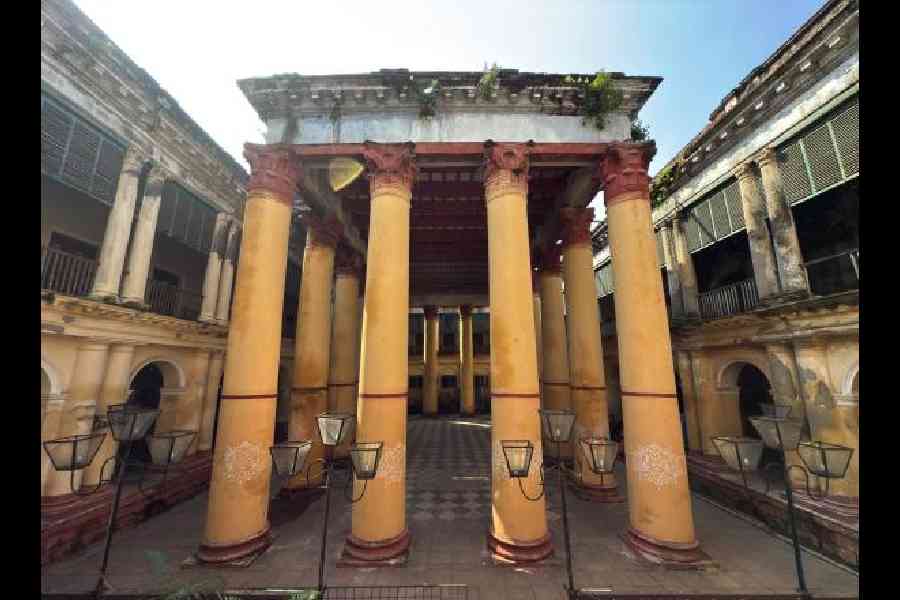
Goswami house
In fact, this was not a pagoda to start with but the arrival (and the leaving) of the young Cambridge-educated priest left a mark on history. Built in 1577 as Radhaballav Temple on the banks of an encroaching river, it was abandoned.
Martyn’s arrival was unlike anything we have read in a Hans Christian Andersen fairy tale. After sailing for nine months, he arrived in Calcutta in 1806 where he met the missionary and scholar William Carey. A breakfast “without the smell of the ship” led to a friendship that also involved David Brown, an East India Company chaplain who lived outside Calcutta.
Brown, the founder of Calcutta Bible Society, invited him to stay in Aldeen House in Serampore. “My habitation assigned me by Mr B. is a pagoda in his grounds, on the edge of the river.” It soon became a place of “prayer and praise”, fitted up with an organ.
Shortly before he left Aldeen for Dinapore, many of his friends gathered at his dwelling. He went on to establish a few schools but running them was not the easiest of tasks. In April 1809, he was moved to Cawnpore. Work took a toll on his health and was ordered by a physician to take a break, bringing him back to Calcutta for several months, after which he left for Bombay and then onwards to Shiraz in 1811.
What happened to the “pagoda”? It “degraded” in other hands and the brand Pagoda Distillery for a time came to be known as makers of Pagoda Rum.
How do you reach the place? Avoid it if wild pigs, muck and overgrowth don’t impress you. It involves crossing Howrah Water Works, a trek on a narrow pathway across two ponds followed by a few heart-in-the-mouth moments. You don’t want to be caught alone here because Martyn is not at home.
Falling apart, aren’t we all?
The sight is a familiar one along almost every road in Calcutta: Dream houses of an era long dead littered with mouldered remnants.
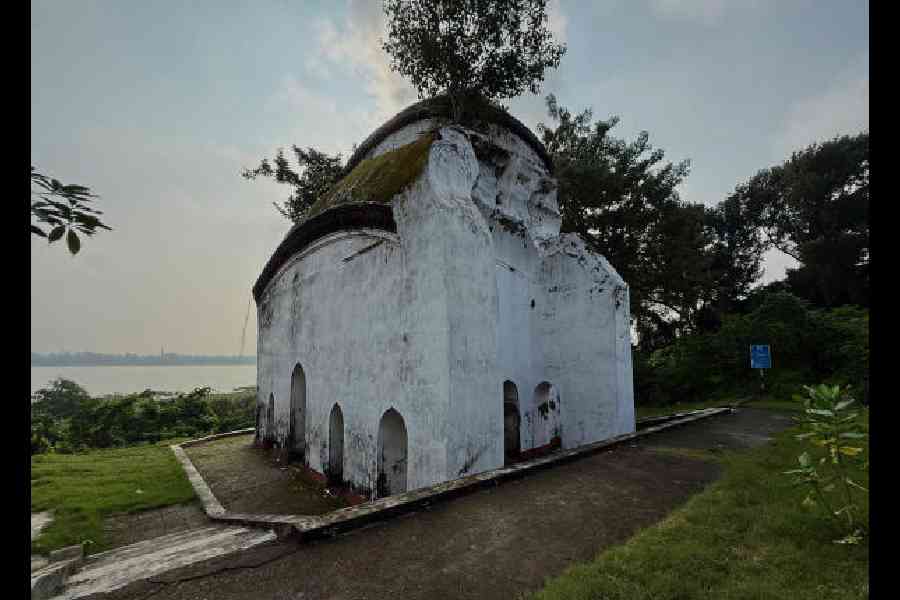
Henry Martyn Pagoda
Bathgate & Co on 62/11 Ballygunge Circular Road now has ice in its veins, roots breaking through walls of what was the dispensary of Calcutta’s first pharmacy (there is also a branch office on Camac Street).
Once called “the prettiest pharmacy in India”, the original office (established in 1811) was at Old Court House Street, dealing with “prescription services and toilet requisites” and later on, it appears, there was a photography department as well as manufacturing several products, like “aerated waters, galenicals, and biologicals”.
Success stories inspire. In this case, it came in waves, an apothecary’s shop in Radha Bazar Street by British surgeons John Robinson and James Williamson. Joining them were Dr John Smith and Dr Thomson Dowson Stanistreet, following which it became Smith, Stanistreet and Co, once the place to buy Fellow’s Syrup of Hypophosphites.
Those were days when shops became synonymous with what they sold. Bathgate became known for hair oil and medicine, Osler for electric lights and fans, Marcopolo for Havana cigars, Pisti & Pelekanos for Egyptian cigarettes and Byron’s for soda water.
The address took a different responsibility in the 1970s or 1980s by becoming home to Mr Pires’ Private School, the idea of M.W. Pires, a popular name among St. Xavier’s School students. After leaving Xavier’s, he and his son, Alan, started the new school and students came in large numbers. Needless to say, there was no dearth of students in his new school.
But what now? The roots run deep down the walls of the building, making me realise everything perishes, everything passes. That’s the truth of life.
And goal…
July 28, 1920. Mohun Bagan took on Jorabagan in a Coochbehar Trophy tie. Jorabagan star defender Sailesh Bose was not on the field. He was excluded. Suresh Chandra Chaudhuri, the club’s vice-president, requested that Bose be included but it wasn’t meant to be, angering Chaudhuri, who decided to sever all connections with Jorabagan. Within days, the red-and-gold brigade started taking shape. Success was at their feet and in no time they won the Hercules Cup.
It was time to give the club a proper shape and they were helped by a member of the renowned Bhagyakul Roy family — Tarit Bhushan Roy.
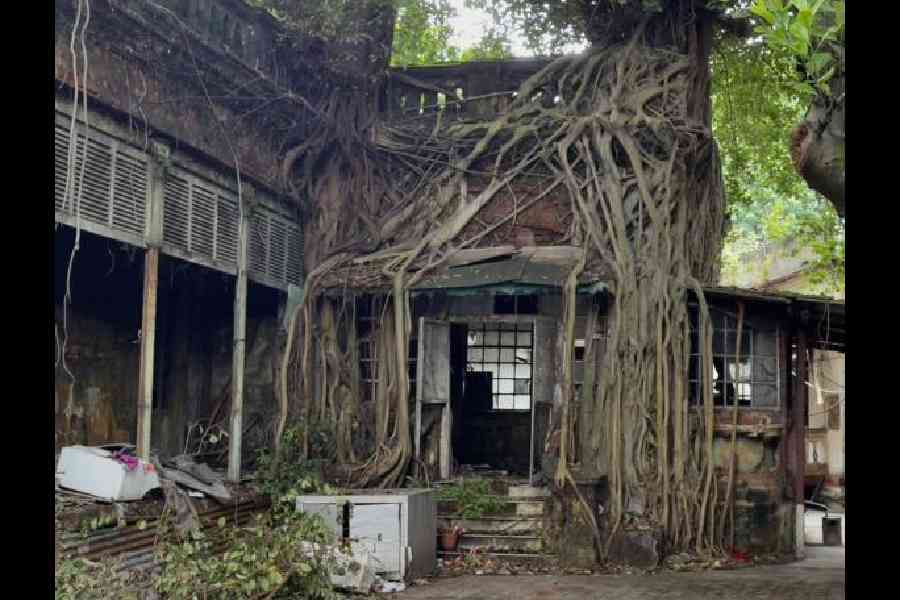
Bathgate & Co on 62/11 Ballygunge Circular Road
Notable names of East Bengal assembled at Roy’s Kumartuli residence — yes, the one you are seeing in the picture — with the principal of Metropolitan College and cricket enthusiast Sarada Ranjan Ray (popularly called ‘India’s W.G. Grace’) chairing the session. The first general meeting was a success. Sarada Ranjan Ray — the paternal grand-uncle of Satyajit Ray — went on to become the club’s first president.
The East Bengal Football Club had arrived.


